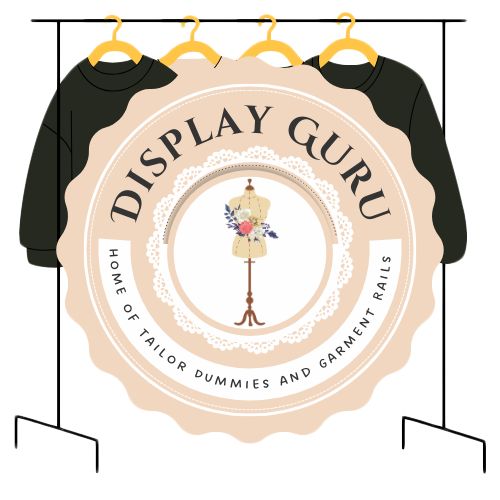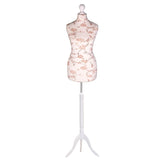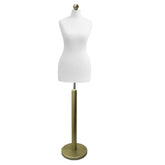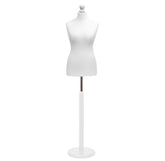Smart Storage Units for Crafts
Dedicated storage units for crafts can be a game-changer. They give you a secure, climate-controlled space to organise your supplies, protect your valuable materials from damage, and finally declutter your home workspace. For hobbyists and small business owners alike, self-storage is a smart way to manage inventory and reclaim your creative freedom.
Why Crafters Need Specialised Storage Solutions

Does your ever-expanding collection of craft supplies feel a little overwhelming? If you're a painter with canvases stacking up, a knitter whose yarn has taken over the living room, or a jeweller finding beads in every corner, you're certainly not alone. The pure joy of creating often comes with the challenge of keeping all those materials in check.
The passion for crafts and handmade products has boomed in the UK. With around 73% of UK adults recently buying handmade goods, annual craft sales have soared past £3 billion. This creative explosion means more materials and more inventory, leading to a much greater need for storage that truly protects everything from delicate fabrics to temperature-sensitive glues.
Common Pain Points for Creatives
Let's be honest, for many of us, the dining room table doubles as a sewing station and the spare bedroom has become a mini-warehouse. This reality often leads to a few common frustrations that can really get in the way of creativity:
- Lack of Space: As your passion grows, so does your collection of supplies, which can quickly outgrow every available inch of home storage.
- Damage to Materials: Your home environment, with its fluctuating temperatures and humidity, can easily ruin delicate items like paper, wood, and textiles.
- Disorganisation and Lost Time: How much time do you waste searching for that one specific spool of thread or shade of paint? It's precious creative energy down the drain.
- Blurring Work-Life Boundaries: When your hobby or business physically takes over your living space, it can feel impossible to switch off and relax.
A dedicated storage unit isn't just a place to stash your things; it becomes a functional extension of your workspace. It’s not about hiding supplies away, but about creating a system that actively supports your creative process.
To truly take back your creative space, a great first step is to learn how to build your personal organization system. This guide can help you create a roadmap for choosing and setting up a storage unit perfectly suited to your materials. For more direct inspiration, our guide on effective sewing room ideas shows just how much a well-organised space can spark creativity.
Selecting the Right Unit for Your Craft Supplies
Choosing a storage unit for your craft supplies isn't just about finding the cheapest or closest option. It's an investment in protecting your valuable materials. For crafters, the features of a storage unit directly impact the quality and longevity of your stock. A basic, garage-style unit might seem like a bargain, but it can leave your delicate supplies vulnerable to damage.
Think about it: materials like wood, paper, and textiles are incredibly sensitive to changes in temperature and humidity. These fluctuations can lead to warping, mildew, and other irreversible damage. That's why climate control is often a non-negotiable for serious crafters. A climate-controlled unit keeps the environment stable, acting as a crucial safeguard for your most sensitive items.
The demand for these kinds of specialised spaces has grown significantly. The UK self-storage industry now offers over 64.3 million square feet of floorspace, partly because so many people need a secure place for temperature-sensitive items like craft supplies and artwork. This trend shows a wider recognition of what professional storage can really offer.
Climate Control and Security
When you begin looking for a storage unit, make climate-controlled, indoor options your top priority. These units are your best defence against the damp British weather, which can be disastrous for fabrics, yarns, and paper stock.
Beyond the climate, security is paramount. You need to know your supplies are safe. Look for facilities that offer genuine peace of mind with features like:
- 24/7 CCTV surveillance to monitor the premises.
- Secure gated access requiring a personal code.
- On-site staff during business hours for an extra layer of oversight.
This quick guide can help you decide between an indoor or a simpler drive-up unit, depending on what you're storing.

As you can see, if your supplies are sensitive to temperature changes, an indoor unit with climate control is the only way to go.
Not all craft materials have the same needs. To help you narrow down your search, here's a quick comparison of which features matter most for different types of crafts.
Comparing Storage Features for Different Craft Types
| Craft Type | Recommended Unit Feature | Reasoning |
|---|---|---|
| Woodworking | Climate Control | Prevents wood from warping, cracking, or swelling due to humidity changes. |
| Knitting & Crochet | Pest Control & Indoor Access | Protects natural fibres like wool and cotton from moths and moisture damage. |
| Painting | Climate Control & Good Lighting | Keeps canvases taut and prevents paint from cracking or degrading in extreme temps. |
| Papercrafts & Scrapbooking | Climate Control & Dry Environment | Stops paper and cardstock from yellowing, curling, or developing mildew. |
| Jewellery Making | High Security & Small Lockers | Protects valuable metals and beads from theft and environmental tarnish. |
Ultimately, the best choice depends entirely on the materials you work with. A painter and a woodworker will have very different priorities from someone who works with textiles.
Access and Location Matter
Creativity rarely follows a 9-to-5 schedule. You might have a late-night burst of inspiration or need to prep for a project at the crack of dawn. For this reason, 24-hour access can be a game-changer. It means your storage unit becomes a true extension of your workspace, available whenever you need it.
The unit’s location is another practical point to consider. A facility that’s miles out of your way will quickly become a hassle. Try to find a place that’s easy to get to from your home or studio, so popping over to grab supplies doesn't feel like a major chore. The closer it is, the more likely you are to integrate it seamlessly into your creative workflow.
A well-chosen storage unit should feel like a convenient, accessible resource—not a remote outpost. The goal is to make grabbing what you need as easy as possible, so it supports your creativity instead of holding it back.
Finally, take a moment to get a feel for the facility itself. Is it clean? Does it look well-maintained? Are the staff helpful and professional? Taking the time to assess these details will ensure you find a unit that truly serves you and your craft. If you're looking for more general advice, this guide on how to choose the best storage facility covers some excellent best practices that apply to any storage need.
Organising Your Unit for Maximum Efficiency

So, you’ve secured your storage unit. That’s a great first step, but now comes the real challenge: turning that empty box into a functional, efficient extension of your craft room. A bit of smart planning here is what makes the difference between a cluttered dumping ground and a truly useful creative archive. The ultimate aim? To walk in and find exactly what you need without a frustrating search.
Before a single box goes through the door, it’s time to take stock. Lay everything out and group your supplies into sensible categories—all the fabric together, paints with other paints, yarn with yarn. This sorting session isn't just a tidy-up; it’s the blueprint for your entire storage system, guiding everything from the containers you choose to how you arrange the space.
Choosing the Right Containers
The containers you pick are the very foundation of your organisational system. While it's tempting to just use whatever cardboard boxes you have lying around, I can tell you from experience that investing in the right storage bins will save you a world of hassle later on.
Visibility is your best friend here. I always recommend clear, stackable plastic bins because they let you see what's inside at a glance. No more opening ten identical boxes to find one specific skein of wool. For all those tiny bits and bobs like beads, buttons, or glitter, small multi-compartment organisers are perfect. You can then group these smaller boxes inside a larger bin to keep everything tidy.
Think about matching the container to the craft supply:
- Clear Stackable Bins: These are your workhorses. They’re ideal for the bulk of your supplies like yarn, fabric remnants, or larger tools.
- Airtight Tubs: Absolutely essential for anything that reacts to air and moisture. Think polymer clay, certain adhesives, or speciality paints that could otherwise dry out.
- Archival Boxes: For anything precious or delicate, like high-quality paper, photographs, or finished artwork, you'll want acid-free archival boxes to protect them from light and degradation.
Think of your storage unit as a personal library for your creative projects. Everything needs a designated home, a clear label, and a simple way to be accessed. A well-organised unit fuels your creativity, whereas a chaotic one just becomes a roadblock.
For more brilliant ideas on bringing order to a creative space, our guide on sewing room organization has some fantastic principles you can easily apply to your storage unit.
Designing a Logical Layout
With all your supplies neatly boxed up and labelled, you can start thinking about the physical layout. The secret to an efficient storage unit is using every inch of space without sacrificing accessibility. Simply stacking boxes from the back wall to the front door is a recipe for disaster—the one thing you need will always be at the very bottom, right at the back.
Instead, the trick is to think vertically and create walkways. I find that free-standing metal shelving units are one of the best investments you can make. They allow you to use the full height of the unit, keeping your precious supplies off the floor and making everything easy to see and grab.
Here’s a simple strategy I've used time and again:
First, leave a central aisle. Always give yourself a clear path down the middle of the unit. This means you can actually reach the things at the back without having to pull everything else out first.
Next, place heavy items low. Store your heaviest boxes and materials on the bottom shelves or on the floor. This creates a much more stable setup and saves you from any back-breaking lifts.
It’s also smart to position frequently used items near the front. Any supplies you know you’ll be grabbing on a regular basis should be kept right by the door for quick access.
Finally, create a simple 'map'. It might sound a bit over the top, but a quick sketch of your layout taped to the inside of the door is a lifesaver. This little visual guide will remind you exactly where each category of supplies lives, saving you precious time on every visit.
Looking After Your Precious Craft Materials
Getting your storage unit organised is a fantastic first step, but the real challenge is making sure everything stays in perfect condition. This is about more than just tidiness; it’s about protecting your investment and making sure your materials are ready to go the moment creativity calls. Every craft supply has its own set of needs, so your protection strategy has to be as varied as your collection.
The UK's arts and crafts scene is a huge part of a Western European market projected to be worth $48.33 billion in 2025. It's clear that people are passionate about their hobbies and investing in high-quality supplies, from artisan yarns to specialised paints. With space at home often at a premium, more and more crafters are turning to storage units for crafts to keep their supplies safe. You can get a deeper look into this growing market at Research and Markets.
Fabrics and Textiles
If you work with fabric, your two biggest enemies are moths and moisture. Pests absolutely love natural fibres like wool and silk, so you need to create a barrier.
The best defence is to store all your textiles clean and completely dry in airtight plastic containers. Vacuum-sealed bags are also brilliant for this. Whatever you do, steer clear of cardboard boxes—they’re a magnet for pests and can get damp, which is a recipe for disaster. For a bit of extra security, pop some cedar blocks or lavender sachets into the containers.
Sunlight is another silent destroyer, causing colours to fade permanently. Even inside a dark storage unit, it’s worth wrapping your most treasured fabrics in acid-free tissue paper before packing them away. It's a small step that makes a huge difference in keeping them vibrant. For more professional advice, our guide on sewing room organization ideas has some great tips on caring for materials.
Canvases and Paper Stock
Artists and papercrafters know all too well how delicate their materials can be. Canvases, for instance, are notorious for warping if they aren't stored correctly.
The trick is to always store them vertically. You can build simple racks or just stand them upright with sheets of cardboard between each one to prevent them from touching. Never, ever stack them flat for long periods. The weight will eventually cause the canvas to sag or get dented.
Paper and cardstock are incredibly vulnerable to humidity, which leads to yellowing, curling, and even mildew. To keep them pristine, store them flat inside acid-free archival boxes or portfolio cases. These create a stable, dry environment that protects them from both moisture and light.
Think of your storage unit as a material archive. Each item, from a bolt of fabric to a tube of paint, needs the right conditions to remain in perfect, usable condition. Proper protection now means less waste and frustration later.
Paints, Glues, and Delicate Items
Liquid supplies like paints, glues, and varnishes have a shelf life, and bad storage can shorten it dramatically. The number one rule is to make sure the lids are screwed on as tightly as possible to stop them from drying out. A good tip is to store them upside down, as this can help create a tighter seal. A climate-controlled unit is a real game-changer here, as extreme hot or cold can ruin the consistency of your paints for good.
Finally, a few thoughts on your most delicate items:
- Beads and Sequins: Small, sectioned containers with labels are your best friend. They stop everything from getting mixed up or lost.
- Finished Pottery or Clay Pieces: Wrap each piece individually in bubble wrap and place it in a sturdy box with plenty of padding to prevent movement.
- Delicate Tools: Keep sharp or fragile tools like blades or fine brushes in foam-lined cases. This protects them from damage and keeps them sharp.
By matching your protection methods to each material, your storage unit becomes more than just a space—it becomes a true safe-haven for your creative passion.
Making Your Storage Unit Part of Your Creative Flow

A great storage unit should do more than just hold your overflow; it needs to become an active, fluid part of how you create. If you start thinking of it as a satellite workshop rather than a dusty archive, you can build a system that genuinely boosts your productivity. This is all about moving beyond random trips and creating a deliberate workflow between your home studio and your unit.
The trick is to treat the unit as a dynamic inventory hub. A jewellery maker, for instance, might keep their bulk supplies of beads and wires in the unit, bringing only what's needed for the current week's projects back to their main workspace. This simple habit keeps the primary studio focused and completely clutter-free.
Build a 'Grab-and-Go' System
One of the most powerful strategies I’ve seen is preparing project-specific kits. Instead of rummaging for individual items every time you start something new, you pre-pack clear bins with all the necessary materials for a particular craft.
Let's say you're a multi-talented crafter who enjoys both knitting and painting. You could have a "knitting" bin with the specific yarns, needles, and patterns for that jumper you've been meaning to start. Alongside it, a separate "painting" bin holds the canvases, brushes, and acrylics for your next art piece. When inspiration strikes, you just grab the right bin. The time and mental energy you save is immense.
A storage unit transforms from a passive holding area into a productivity tool when you build systems that anticipate your creative needs. It’s about making your future self’s job easier.
This approach is a godsend for small business owners managing stock for craft fairs. You can prep bins organised by product line or event, which makes loading the car and setting up your stall incredibly efficient.
Use Digital Tools to Manage Your Stash Remotely
You don’t have to physically be in your unit to know what you have. A simple digital inventory can be a game-changer for managing your storage units for crafts.
All you need is a basic spreadsheet or a dedicated inventory app on your phone to track your supplies. Before you seal a box, take a few minutes to photograph the contents and upload the images to your digital list. This allows you to "shop" your own supplies from the comfort of your studio, so you can plan projects without making unnecessary trips.
This system has the brilliant side effect of preventing you from buying duplicate materials—a classic pitfall for any crafter. A quick check on your app saves both money and waste. If you’re looking to apply these principles at home, our guide on designing a sewing table with storage has some great tips for keeping your main workspace just as organised.
Schedule Your Visits and Supply Rotations
Finally, be intentional with your visits. Instead of only heading over when you desperately need something, schedule regular, brief trips to keep your system in good shape.
- Monthly Swaps: Dedicate one visit a month to swap out project kits or return unused supplies. It keeps things fresh.
- Seasonal Rotations: If your craft follows the seasons, use these visits to rotate materials. In late summer, for example, bring your autumn-themed fabrics to the front and move those bright summer yarns to the back.
This proactive approach ensures your unit stays organised and functional. It becomes a reliable support for your creative work, rather than another source of stress.
Your Craft Storage Questions Answered
Even with the best plans in the world, a few practical questions always pop up when you're on the verge of getting a storage unit. I've been there. To help you get it right from the start, I’ve pulled together some of the most common queries I hear from fellow crafters, along with some straightforward, honest answers.
Sorting these details out now will save you a world of frustration later and make sure your storage unit works for you, not against you.
Is a Climate-Controlled Unit Really Necessary?
For most craft supplies? Absolutely, yes. Climate control isn't some fancy add-on; it’s your first line of defence against the UK's damp and unpredictable weather. It keeps the temperature and humidity steady, which is the secret to protecting your precious materials from ruin.
Think about what you're actually storing:
- Wood and Canvases: These materials can warp, crack, or swell with even subtle changes in moisture.
- Paper and Fabric: Your worst enemies here are mildew, yellowing, and general dampness. They’ll find your fabric stash in a heartbeat.
- Paints and Adhesives: Extreme heat or cold can completely change their consistency, rendering them useless.
If you’ve invested your hard-earned money and time into your supplies, a climate-controlled unit is cheap insurance. It keeps everything in pristine condition, ready for when inspiration strikes.
A mistake I see all too often is underestimating the slow, creeping damage humidity can do over a few months. Paying a little extra for climate control now can save you a fortune in replacing ruined materials down the road.
How Can I Keep Track of My Inventory?
The last thing you want is to drive to your unit for a specific ball of yarn, only to realise it’s not there. The solution is a simple digital inventory. You don't need complicated software—a basic spreadsheet or even a notes app on your phone works perfectly.
Before you tape up a box, just jot down its contents. Better yet, snap a quick photo.
Label every single box clearly on multiple sides with a number and a brief description (e.g., "Box 3: Blue & Green Wools"). I also recommend sketching a rough map of your unit's layout and keeping it with your digital list. This little system lets you 'shop' your stash from your sofa, so you know exactly what you have and where it is before you even grab your keys.
What’s the Best Way to Store All the Tiny Bits?
Ah, the small stuff. Beads, buttons, sequins, and all those other tiny treasures can quickly descend into chaos. I’ve found the most effective solution is to use those transparent, multi-compartment organisers you can pick up from any craft or hardware shop. Labelling each little section is a game-changer.
Once you’ve sorted them, group these smaller organisers into larger, clear plastic bins. This keeps all your tiny supplies contained, visible, and easy to grab when you need them. For a deeper dive, our guide on choosing the perfect sewing organizer box has some brilliant ideas that work for just about any small craft item.
Can I Actually Work on My Crafts Inside the Unit?
This is a common question, but the answer is almost always a firm no. Most self-storage facilities have strict rules against using units as workshops. It’s not them being difficult; it's purely for safety and insurance reasons. These places simply aren't set up with the ventilation, power, or fire safety measures needed for active crafting.
It's best to think of your unit as a perfectly organised extension of your home studio. It’s your supply closet, not your worktable.
At Display Guru, we're here to help you organise and showcase your creative passion. From professional tailor's dummies to sturdy garment rails, we have the tools to bring your work to life. Explore our full range at https://www.displayguru.co.uk.








